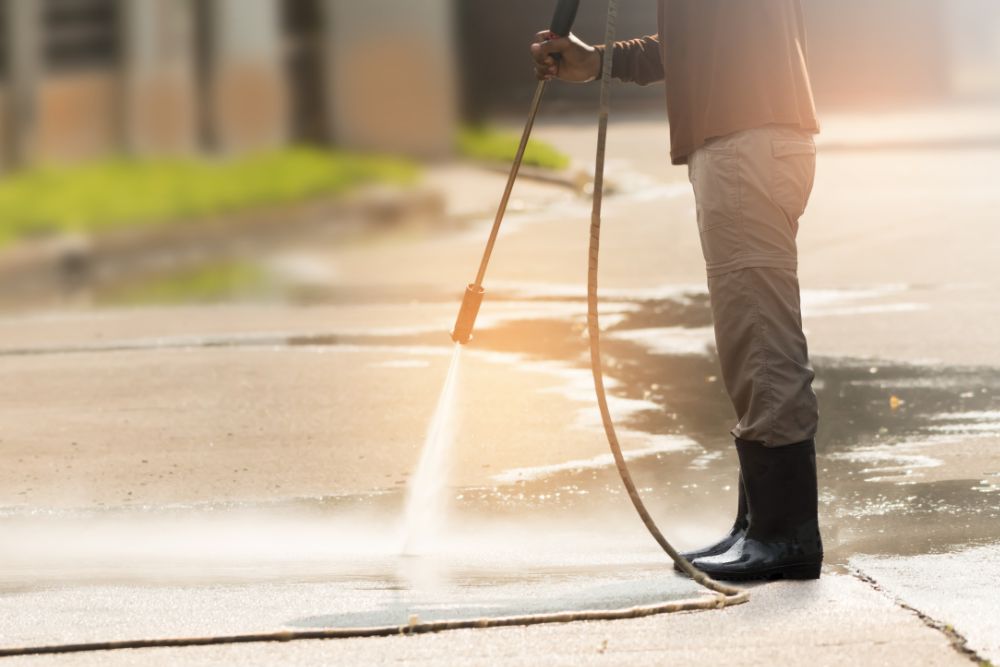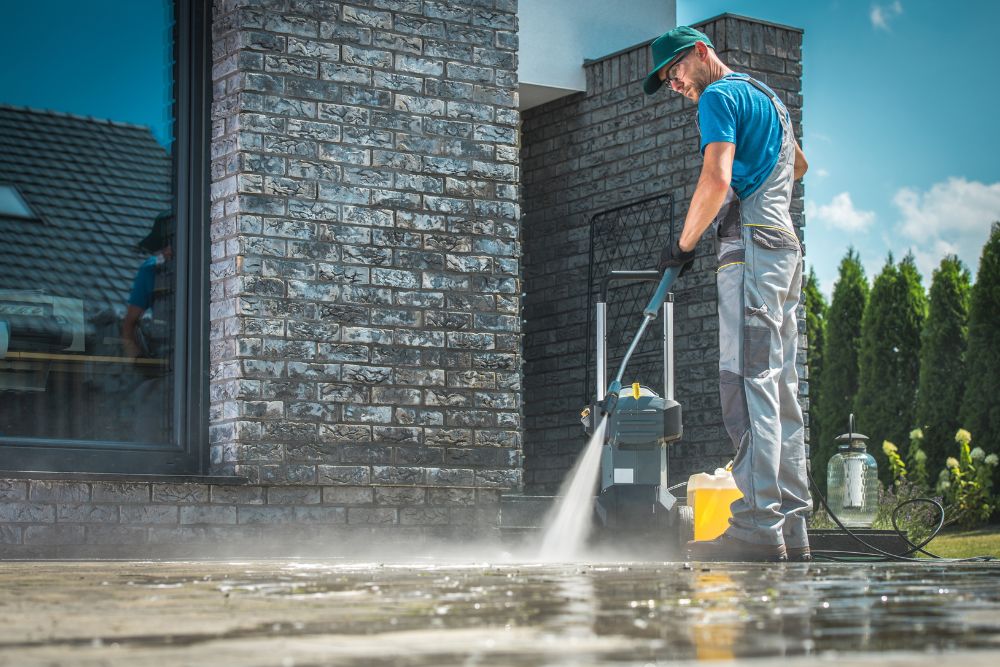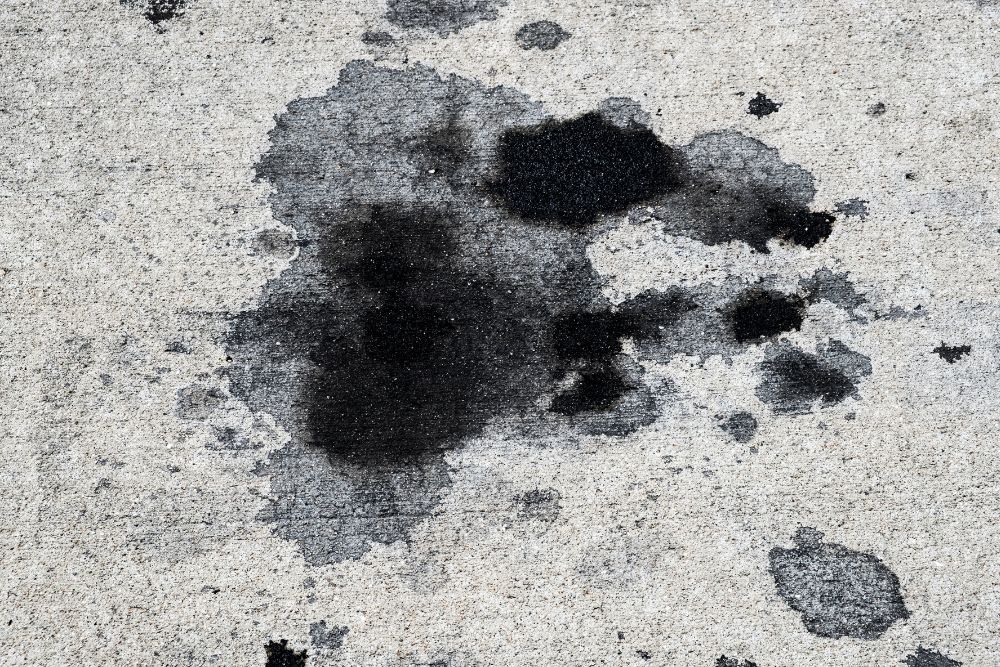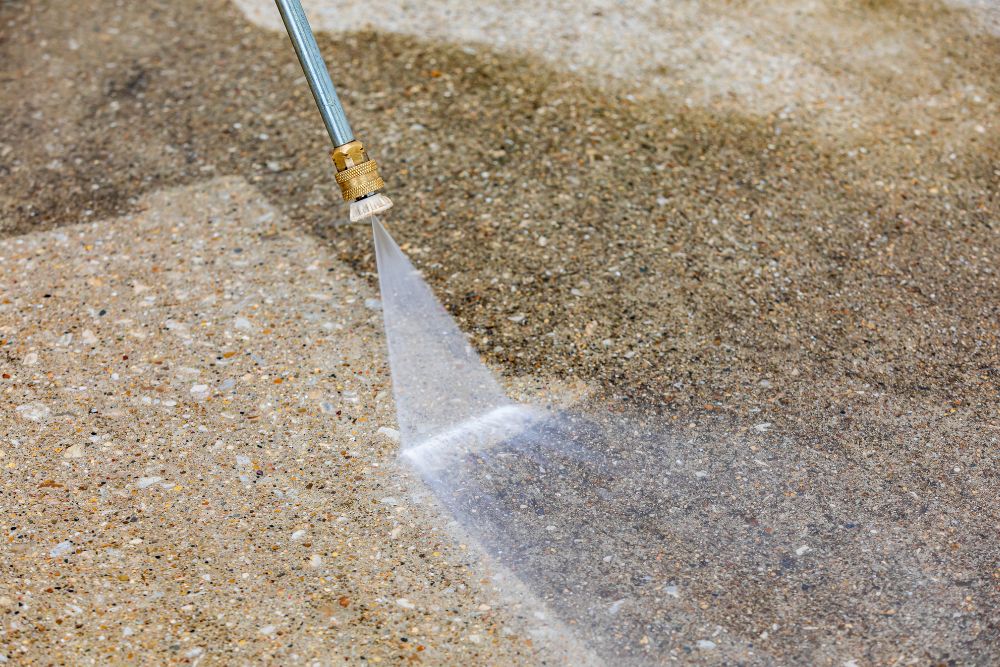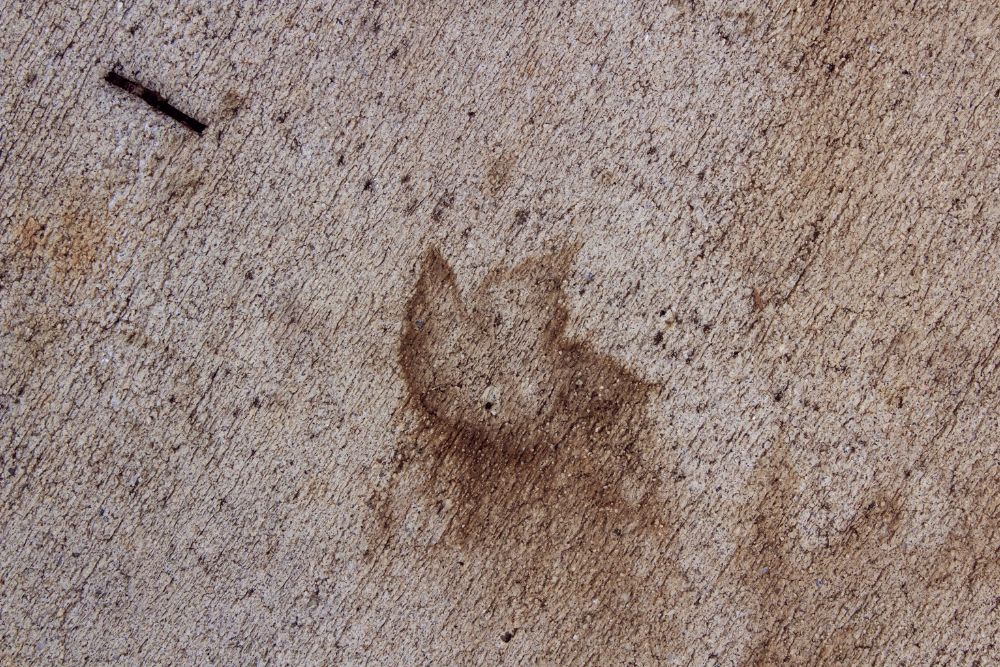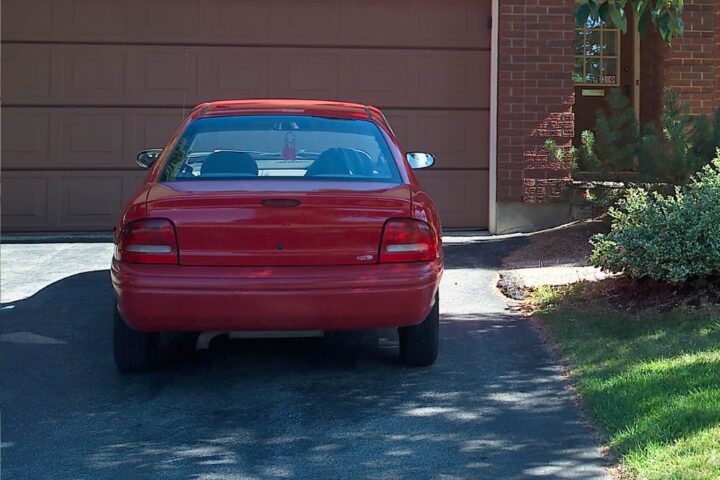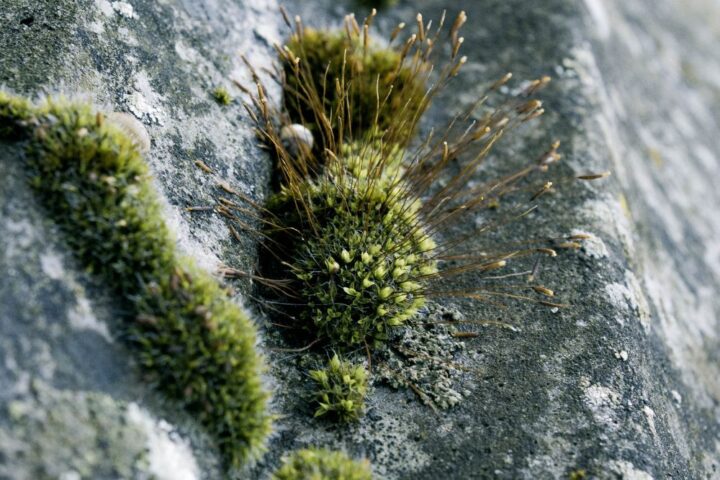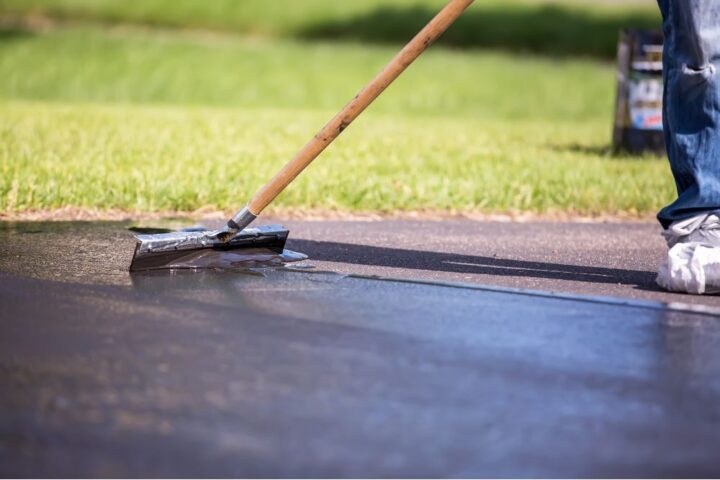Maintaining a clean and well-maintained concrete driveway is essential for enhancing its longevity and aesthetic appeal. Despite the irony that a driveway, a surface often associated with vehicular traffic and exposed to various environmental factors, requires regular cleaning and maintenance, neglecting these tasks can lead to the deterioration of the concrete and the accumulation of unsightly stains and debris.
In this article we will provide a comprehensive guide on how to effectively clean and maintain your concrete driveway in Melbourne. We will discuss the necessary tools and techniques for cleaning, the best cleaners for different types of stains, such as oil, grease, mold, mildew, and fertilizer, and general maintenance tips to prevent further damage.
Additionally, we will also cover the importance of periodically sealing the driveway to protect it from moisture and other potential sources of deterioration. By following the recommendations outlined in this article, homeowners can ensure the longevity and visual appeal of their concrete driveways.
Tools You Can Use to Clean a Concrete Driveway
Concrete driveways can be effectively cleaned and maintained using a range of specialised and general tools, ensuring a thorough removal of dirt, grime, and stains. These tools are specifically designed to tackle the unique challenges that arise from cleaning concrete surfaces, allowing homeowners to achieve optimal results.
One essential tool for cleaning a concrete driveway is a pressure washer. Pressure washers will dislodge stubborn dirt and debris from the surface of your driveway and make cleaning a breeze. Pressure washers are available in various sizes and power levels, allowing you to select the most suitable option for your driveway.
Another good tool is a stiff-bristle broom. These brooms are effective in removing loose dirt and debris before using the pressure washer. The stiff bristles help to agitate and lift the dirt, allowing for easier removal. It is recommended to use a broom with synthetic bristles, as natural bristles may deteriorate over time.
For tackling tough stains on a concrete driveway, a scrub brush or a wire brush can be utilised. These brushes provide extra scrubbing power to remove oil, grease, or other stubborn stains. When using a scrub brush, it is important to apply a suitable cleaning solution to help break down the stain before scrubbing. This will aid in achieving a more effective and efficient cleaning process.
Lastly, a wet/dry vacuum can be beneficial for removing excess water and debris from the driveway after cleaning. This tool can help speed up the drying process and prevent any potential water damage. It is important to select a wet/dry vacuum with sufficient power and capacity to handle the size of the driveway.
How to Clean a Concrete Driveway With a Hose or Pressure Washer
Regular maintenance of your outdoor surface is essential to preserve its appearance and ensure its longevity. One effective method of removing dirt and grime from your paved area involves the use of a hose or pressure washer. Cleaning a concrete driveway with a hose or pressure washer is a relatively straightforward process that can yield excellent results. Here are some steps to follow:
- Prepare the area: Before starting the cleaning process, remove any debris or loose dirt from the surface of the driveway. This can be done by sweeping or using a leaf blower.
- Wet the surface: Start by wetting the entire driveway with a hose. This will help to loosen any built-up dirt and make the cleaning process easier.
- Apply detergent: Use a concrete cleaner or a mild detergent mixed with water and apply it to the surface of the driveway. Make sure to follow the manufacturer’s instructions for the appropriate dilution ratio.
- Scrub the surface: Use a stiff brush or a broom to scrub the entire driveway, paying extra attention to any stubborn stains or areas with heavy dirt build-up.
- Rinse with high pressure: Once the detergent has been applied and scrubbed, rinse the driveway thoroughly with a hose or a pressure washer. Use a high-pressure setting to effectively remove all the dirt and grime.
By following these steps, you can effectively clean your concrete driveway using a hose or pressure washer. Regular maintenance using this method will help to keep your driveway looking clean and well-maintained, enhancing the overall aesthetic appeal of your outdoor space.
What Is the Best Cleaner For a Concrete Driveway?
An effective solution for removing stains and grime from outdoor surfaces is to use a high-quality cleaner specifically designed for removing dirt and debris from paved areas. When it comes to cleaning a concrete driveway, finding the best cleaner is crucial to achieving optimal results. There are several options available in the market, each with its own set of advantages and disadvantages.
One of the most popular and highly recommended cleaners for concrete driveways is a degreaser. This type of cleaner is effective in removing oil and grease stains that are commonly found on driveways. Degreasers work by breaking down the oil molecules, making it easier to remove them from the surface. It is important to choose a degreaser that is safe for use on concrete and follow the instructions provided by the manufacturer to ensure proper application.
Another option for cleaning a concrete driveway is a concrete cleaner specifically formulated for removing dirt, grime, and other stains. These cleaners are designed to penetrate the porous surface of concrete and lift away embedded dirt and stains. They are typically available in liquid or powder form and can be applied using a brush or sprayer. It is important to choose a cleaner that is compatible with the type of stains you are trying to remove and follow the instructions for dilution and application.
In addition to degreasers and concrete cleaners, there are also specialised cleaners available for removing specific types of stains, such as rust or mold. These cleaners are formulated with ingredients that target the specific stain, making them more effective in removing it from the concrete surface.
How to Clean Oil and Grease Stains From Your Concrete Driveway
To effectively remove oil and grease stains from a concrete driveway, one must employ a targeted cleaning method that addresses the specific nature of these types of stains. These stains can be particularly stubborn and require proper techniques and tools for successful removal. Here are three key steps to effectively clean oil and grease stains from a concrete driveway:
- Absorb the Stain: Begin by promptly blotting the fresh oil or grease stain with a clean cloth or paper towels. This step helps to remove any excess oil on the surface and prevents it from seeping deeper into the concrete. Avoid rubbing the stain, as it may spread and embed further.
- Apply a Degreaser: Once the excess oil has been absorbed, it is crucial to apply a high-quality degreaser specifically designed for concrete surfaces. Follow the instructions provided by the manufacturer and ensure that the product is evenly distributed over the stained area. Allow the degreaser to penetrate the stain for the recommended time to break down the oil or grease.
- Scrub and Rinse: After the degreaser has had sufficient time to work, use a stiff-bristled brush or a pressure washer to scrub the stained area. Scrub in a circular motion to effectively lift the oil or grease from the concrete surface. Rinse the area thoroughly with clean water to remove any residue and ensure a clean finish.
By following these steps, one can effectively remove oil and grease stains from a concrete driveway. It is important to note that prevention is always better than cure, so regular maintenance and prompt cleaning of spills can help minimize the occurrence of such stains.
Cleaning Mould and Mildew From a Concrete Driveway
Mould and mildew can pose a significant challenge when it comes to preserving the appearance and integrity of outdoor surfaces. Concrete driveways are particularly vulnerable to the growth of mould and mildew due to their porous nature and exposure to moisture. These unsightly and potentially harmful substances thrive in damp and shaded areas, such as driveways that receive limited sunlight or are often exposed to water runoff. It is essential to address mould and mildew promptly to prevent further damage and maintain the aesthetic appeal of the driveway.
To clean mould and mildew from a concrete driveway, several steps can be taken. Firstly, it is important to wear protective gear such as gloves and a mask to minimise exposure to potentially harmful spores.
Next, any loose debris or vegetation should be removed from the surface using a broom or a pressure washer set on a low setting. Once the surface is clear, a solution of one part bleach to three parts water can be applied to the affected areas. This mixture should be left to sit for approximately 15 minutes to allow the bleach to penetrate and kill the mould and mildew. Scrubbing the surface with a stiff brush or a push broom can help to remove any remaining stains.
Finally, the driveway should be thoroughly rinsed with clean water to remove any residue and prevent the bleach from causing discoloration.
Regular maintenance and preventive measures can also help to minimise the occurrence of mould and mildew on a concrete driveway. Ensuring proper drainage and eliminating standing water will discourage the growth of these substances.
Additionally, trimming back overhanging trees or shrubs can increase sunlight exposure to the driveway, reducing the damp conditions that favour mould and mildew growth. Applying a concrete sealer can also provide a protective barrier that makes it more difficult for mould and mildew to take hold.
How to Remove Tyre Marks From a Driveway
Tyre marks left on outdoor surfaces can detract from the overall appearance and cleanliness of a paved area. Whether caused by regular vehicles or heavy machinery, these marks can be unsightly and stubborn to remove from a concrete driveway. However, with the right approach and tools, it is possible to effectively eliminate tyre marks and restore the pristine condition of the driveway.
To remove tyre marks from a concrete driveway, follow these steps:
- Clean the area: Before attempting to remove the tyre marks, it is essential to thoroughly clean the entire driveway. This can be done using a pressure washer or a high-quality concrete cleaner. Remove any dirt, debris, or loose particles from the surface.
- Identify the type of tyre mark: Tyre marks can vary in severity and composition. It is important to identify whether the mark is superficial or has penetrated deeper into the concrete. Superficial marks can often be removed with basic cleaning methods, while deeper marks may require more intensive techniques.
- Use a degreaser: Apply a degreaser specifically formulated for concrete surfaces onto the tyre marks. Allow the degreaser to sit for the recommended duration, as specified by the manufacturer. This will help break down the oils and residues present in the tyre marks.
- Scrub the area: Using a stiff brush or a broom with firm bristles, scrub the tyre marks vigorously. Focus on the affected areas, applying extra pressure if necessary. This will help loosen the tyre marks and aid in their removal.
- Rinse and repeat if necessary: After scrubbing, rinse the driveway with clean water to remove any remaining residue. If the tyre marks are still visible, repeat the process until the marks are completely eliminated.
By following these steps, tyre marks can be effectively removed from a concrete driveway, restoring its cleanliness and overall appearance. Regular maintenance and prompt cleaning can prevent the build-up of tyre marks and ensure a well-maintained driveway.
How to Clean Fertiliser Stains From Your Driveway
When it comes to maintaining the cleanliness and appearance of a concrete driveway, one common issue that homeowners often encounter is the presence of fertiliser stains. These stains can be unsightly and can detract from the overall aesthetic appeal of the driveway.
However, with the right techniques and materials, it is possible to effectively remove these stains and restore the pristine condition of the concrete surface.
To begin the process of removing fertiliser stains from a concrete driveway, it is important to first identify the affected areas. Once identified, the next step involves preparing a cleaning solution. This can be achieved by mixing a mild detergent with warm water. The detergent should be specifically formulated for use on concrete surfaces to ensure optimal results.
After preparing the cleaning solution, it is recommended to apply it directly to the fertiliser stains. This can be done using a scrub brush or a broom with stiff bristles. It is important to scrub the affected areas thoroughly, applying sufficient pressure to effectively lift the stains. Additionally, it may be necessary to repeat this process multiple times for stubborn or older stains.
Once the stains have been successfully removed, it is advisable to rinse the driveway thoroughly with clean water. This will help to remove any residual cleaning solution and ensure a clean and residue-free finish.
It is important to note that regular maintenance and preventative measures, such as promptly removing any spilled fertiliser and regularly cleaning the driveway, can help to prevent future staining and prolong the lifespan of the concrete surface.
How to Get Rid of Leaf Stains From a Driveway
To effectively remove leaf stains from a driveway, it is necessary to identify the affected areas and prepare a suitable cleaning solution. Leaf stains can be unsightly and can diminish the overall appearance of a concrete driveway. However, with the right approach, these stains can be effectively eliminated.
One effective cleaning solution for leaf stains on a concrete driveway is a mixture of water and mild detergent. This solution can be applied to the affected areas using a scrub brush or a pressure washer. The detergent helps to break down and remove the leaf stains, while the water helps to rinse away any residue.
When applying the cleaning solution, it is important to scrub the affected areas thoroughly to ensure that the stains are completely removed. It may be necessary to repeat the process multiple times for stubborn stains. Additionally, it is advisable to rinse the driveway with clean water after the cleaning process to remove any remaining detergent or residue.
General Concrete Driveway Maintenance Tips
Concrete driveways are known for their durability and low maintenance requirements, but they still benefit from regular maintenance to prolong their lifespan and keep them looking their best.
One important aspect of concrete driveway maintenance is regular cleaning. Sweeping or blowing away debris, such as leaves, dirt, and sand, on a regular basis prevents them from accumulating and potentially causing damage to the surface. Additionally, pressure washing the driveway with a mild detergent can help remove any stains or discolouration caused by oil spills or other substances.
In addition to cleaning, it is important to address any cracks or damage that may occur on the driveway. Promptly repairing any cracks using a concrete patching compound prevents them from spreading and becoming larger issues. Sealing the driveway every few years is also recommended to protect it from moisture, chemicals, and harsh weather conditions, which can cause deterioration over time.
Regularly inspecting the driveway for any signs of damage, such as crumbling edges or uneven surfaces, is essential. These issues can be addressed by hiring a professional to repair or resurface the driveway, ensuring its longevity and safety.
Finally, it is important to avoid using harsh chemicals, such as de-icing salts or acidic cleaners, on the driveway as they can damage the concrete surface. Instead, opt for more gentle cleaning solutions and use a soft-bristle brush or broom to scrub away any stains or dirt.
By following these general maintenance tips, you can keep your concrete driveway in optimal condition, enhancing the overall appearance of your home and ensuring a safe and inviting entryway for years to come.
Sealing Your Driveway
Sealing the paved path leading to your home provides an essential protective barrier against moisture, chemicals, and harsh weather conditions, ensuring the longevity and structural integrity of the surface. When it comes to maintaining your concrete driveway, sealing is a crucial step that should not be overlooked.
Concrete driveways are exposed to a variety of elements that can cause damage over time. Moisture, in particular, can seep into the concrete and lead to cracks and deterioration. By applying a sealant, you create a barrier that prevents water from penetrating the surface, reducing the risk of damage and extending the lifespan of your driveway.
In addition to moisture, chemicals such as oil, gasoline, and de-icing agents can also harm concrete driveways. These substances can cause stains and weaken the surface if left untreated. Sealing your driveway acts as a protective shield against these chemicals, making it easier to clean and maintain the appearance of your driveway.
To seal your concrete driveway, start by thoroughly cleaning the surface to remove any dirt, stains, or debris. Once the surface is clean and dry, apply a high-quality concrete sealer using a roller or sprayer. It is important to follow the manufacturer’s instructions and apply multiple thin coats for optimal coverage.
Frequently Asked Questions About Driveway Cleaning
Can I use bleach to clean my concrete driveway?
Bleach can indeed be used to clean a concrete driveway effectively. Its powerful properties enable it to remove stubborn stains, mould, and mildew.
When using bleach, it is important to dilute it with water to prevent damage to the concrete. Additionally, precautions such as wearing protective clothing and avoiding contact with surrounding vegetation should be taken.
Regular cleaning with bleach can maintain the driveway’s appearance and prevent the buildup of dirt and grime.
What should I do if my concrete driveway has cracks?
If your concrete driveway has cracks, it is important to address them promptly to prevent further damage.
Start by cleaning the cracks thoroughly using a wire brush, removing any debris or loose material.
Next, fill the cracks with a suitable concrete patching compound, following the manufacturer’s instructions.
Allow the patch to dry completely before applying a concrete sealer to protect the driveway.
Regular maintenance, such as sealing the driveway every few years, can help prevent future cracking.
How often should I clean my concrete driveway?
Regular maintenance of a concrete driveway is essential to ensure its longevity and aesthetic appeal. It is recommended that the cleaning of the driveway be performed periodically to remove dirt, stains, and debris. The frequency of cleaning may vary depending on factors such as the climate and the amount of traffic the driveway receives.
Engaging in routine cleaning practices can help preserve the driveway’s appearance and prevent the accumulation of unsightly substances, thereby promoting a well-maintained and visually pleasing exterior.
Is it necessary to seal my concrete driveway?
Sealing a concrete driveway is not necessary but recommended for its long-term protection.
The sealing process involves applying a protective layer on the surface, which helps to prevent water penetration, oil stains, and damage from freeze-thaw cycles.
It also enhances the durability of the concrete by reducing the chances of cracking and spalling.
Although not essential, sealing can significantly prolong the lifespan of a concrete driveway and minimise the need for frequent repairs and maintenance.
How long does it take for a sealed concrete driveway to dry before I can park on it?
A sealed concrete driveway typically takes 24 to 48 hours to dry before it can be safely parked on, depending on the specific product used and weather conditions.
During this time, it is crucial to keep the driveway free from any traffic or heavy objects.
The drying process can be likened to the setting of concrete, where the sealant needs sufficient time to fully bond and harden, ensuring long-lasting protection for the driveway.
Conclusion
In conclusion, maintaining a concrete driveway requires regular cleaning and proper maintenance. By using the right tools, such as a hose or pressure washer, and a suitable cleaner, one can effectively remove dirt, oil stains, mould, mildew, fertiliser stains, and leaf stains.
Additionally, implementing general maintenance tips, such as repairing cracks and applying a sealant, can help prolong the lifespan of the driveway.

